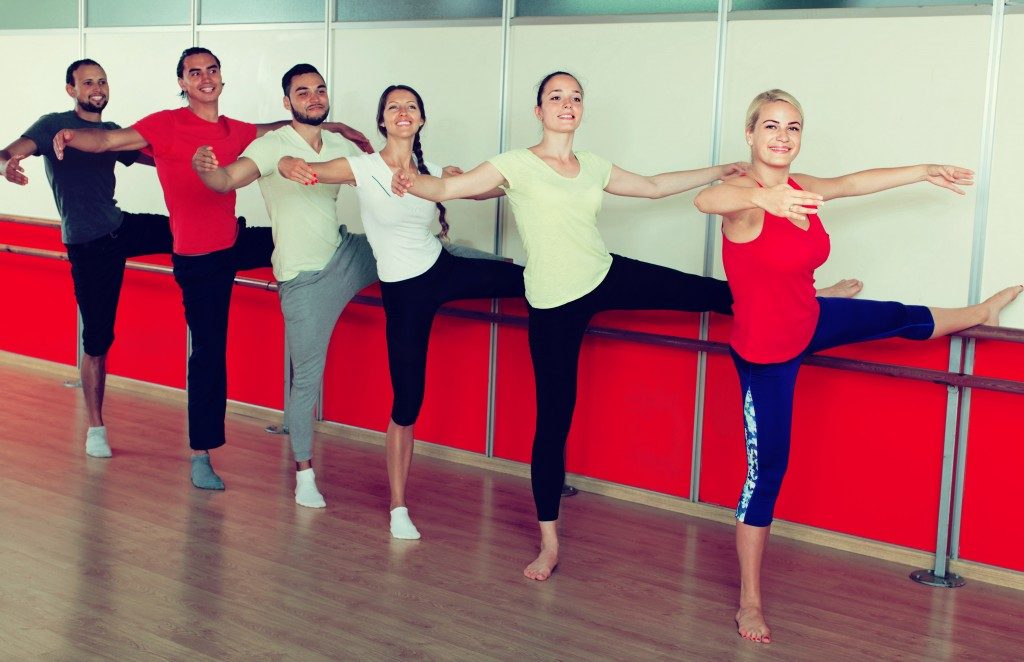Gymnastics is a beautiful yet strenuous sport that pushes the boundaries of what the human body can do. Gymnasts who participate in the Olympics condition their bodies through rigorous training by perfecting their technique, exhibiting their skills and hard work in the world stage.
One of these forms is Rhythmic gymnastics, a sport performed through dance and handheld peripherals.
Rhythmic Gymnastics
Rhythmic gymnastics is performed by women with hoops, ropes, or ribbons accompanied by music. Rhythmic gymnastics began in the 1800s and incorporated elements of choreography, ballet, and muscle work. The sport continued gaining popularity in eastern Europe and attracted more audiences.
In 1963, rhythmic gymnastics was recognized as an official discipline by the FIG. A year later, an international tournament called the Rhythmic Gymnastics World Championship ensued. Interests for the sport began to grow, with the United States first participating at a tournament in 1973.
Beginning 1984, rhythmic gymnastics has been included in the list of Olympic programs and continues to gain momentum. Rhythmic gymnastics does not involve the flips, vaults, and balance beams used in artistic gymnastics. Instead, the sport is known for its performers donning artistic makeup, eloquent costumes and fancy dance moves.
The nature of rhythmic gymnastics has led people to believe that it isn’t a true sport and is just a dance routine involving glitter and ribbons.
Going Beyond Makeup and Leotards

It is true that rhythmic performers wear eloquent costumes such as leotards and use ribbons. However, these are the aspects that only the audience can see. Many people can easily overlook the seemingly effortless performances of rhythmic gymnasts.
What makes the bulk of rhythmic gymnastics is the number of hours and the training involved in making it look easy. Behind the leotards are women soaked in sweat and covered in bruises. Inside the gym, a coach expects these girls to perform at their highest levels.
Before their performances, girls are asked to straighten their knees, stretch higher, and hold challenging poses. These exercises may force an average person to undergo knee replacement surgery here in Orem due to the intensity of such practices.
An ideal gymnast must not only be strong, but extra flexible as well. A regular split isn’t enough, as the legs have to move past 180 degrees. A good way to achieve this is stretching in between chairs with an ankle positioned in each chair.
On top of their flexibility and strength, the gymnasts also have to handle different peripherals in doing the acrobatics. Routines such as these are clearly more intense compared to the practices of a standard ballerina or dancer.
A Beautiful Pain
Rhythmic gymnastics is a beautiful sport cloaked in plenty of intense training hours and exercises. Despite the pain the sport demands, many hopefuls wish to represent their country through rhythmic dance. Hours spend training inside the gym culminates in a performance of a lifetime, lasting below two minutes.
Once the performance begins, a dancer moves gracefully into her element accompanied by the music and the applause. Rhythmic gymnastics remains to be a beautiful sport covered in nice dresses and glittered ribbons.
The sport showcases not only the flexibility and skill of gymnastics but also the art of dance and choreography. Why do people continue pursuing this sport with its strenuous nature and little chance of success? Passion.
To the spectator and untrained eyes, a rhythmic gymnast is a ribbon dancer wearing a nice leotard. For her fellow gymnasts, she is an athlete that doesn’t break to the physical and mental pressures of rhythmic gymnastics.
